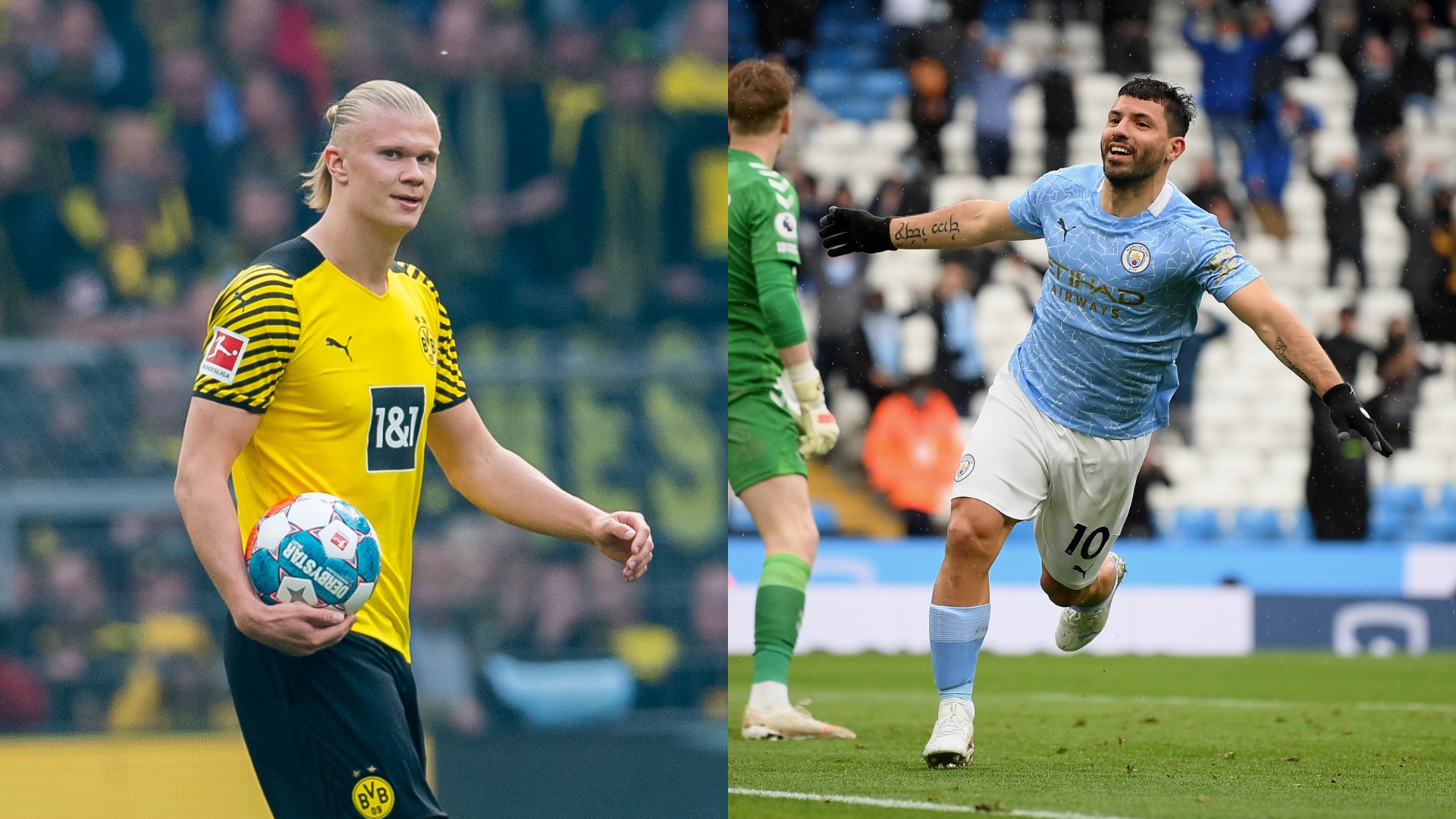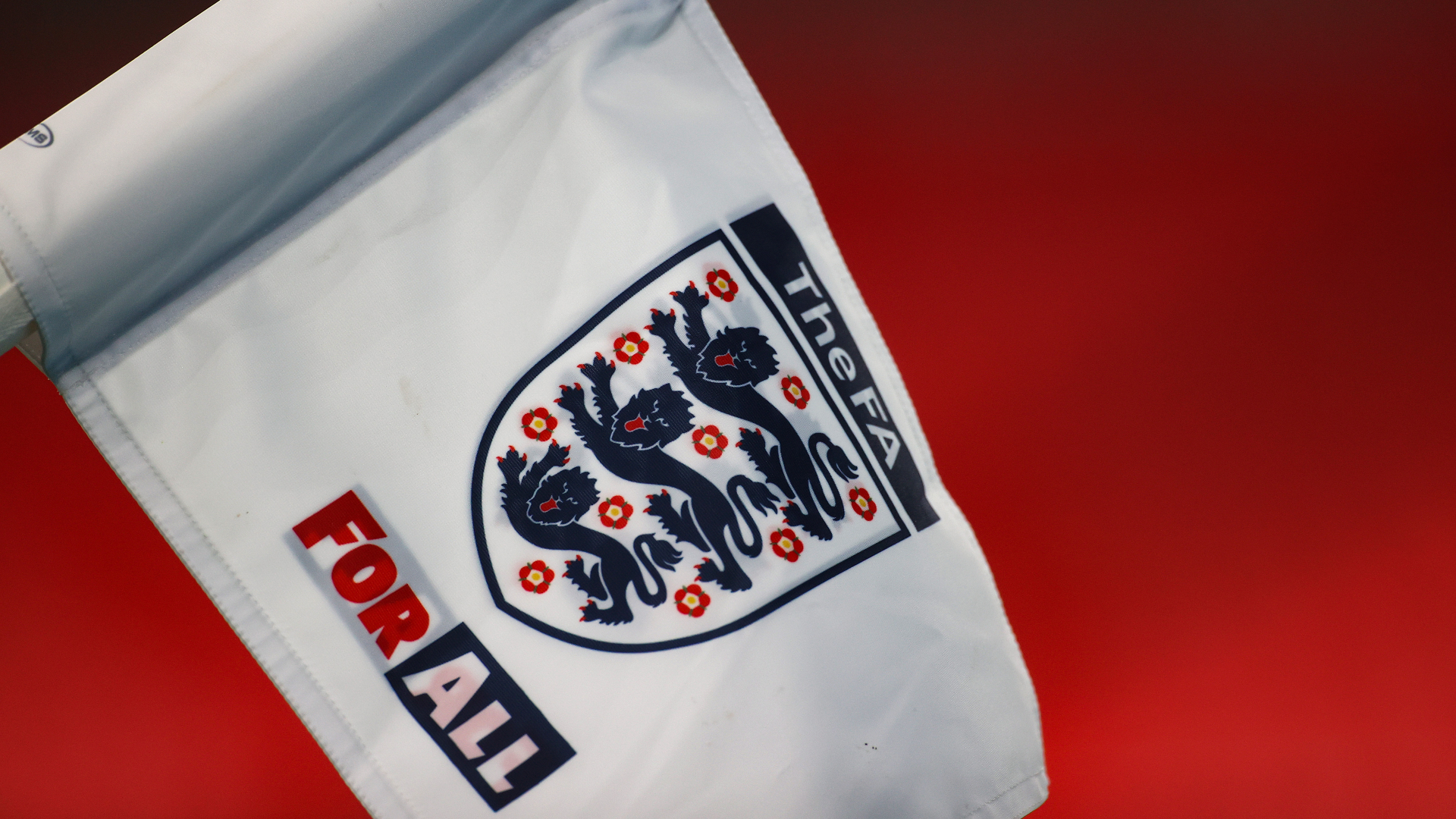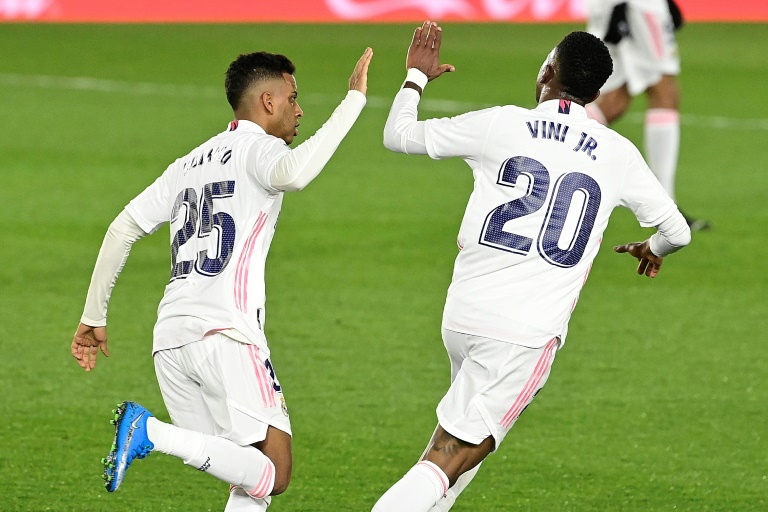
It is finally official. Manchester City will be the new home of Erling Haaland next season after the announcement of an agreement with Borussia Dortmund for the superstar’s capture.
Barring an unexpected issue with personal terms, the striker will arrive after two and a half years in the Bundesliga to bring even more firepower to the Premier League champions.
Having flirted with Tottenham’s Harry Kane throughout last year’s pre-season transfer window without landing their man, City have decided to go down the Haaland route to finally bring in the number nine they have sought since Sergio Aguero left.
Pep Guardiola has told anyone who will listen all season how incredible it is that his team has maintained the standards they have “without a striker”, which can’t have made Gabriel Jesus feel all that good about himself, let’s be honest.
But can Haaland replace the significant impact of club legend Aguero? We have taken a look at the numbers to determine the potential impact of the Norway sensation.
More than just “Agueroooo”
When you reel off a list of the greatest players to don a City shirt, Aguero’s name is likely to feature prominently.
The Argentine striker played a huge role in taking the club from top-four contenders to the most dominant team in England, winning five Premier League titles, six EFL Cups and an FA Cup.
Aguero scored 260 goals in 390 games for City, averaging a goal every 107 minutes over his 10 years at the club.
He, of course, will also forever be synonymous with the famous stoppage time goal against QPR in 2012 that sealed City’s first Premier League title, snatching it from the hands of Manchester United with almost the last kick of the season.
Despite his undoubted quality, there were some questions about how he would fare under Guardiola when the Catalan coach arrived in 2016.
While Guardiola had played with orthodox strikers before, arguably his crowning achievement was cultivating a Barcelona team that many still believe to this day is the greatest club side the game has ever seen – and that broadly played without a number nine, with Lionel Messi often used in a false nine role.
He did utilise Robert Lewandowski to good effect while at Bayern Munich, though, and while he did not exactly make Aguero his first name on the teamsheet every week, the overall development in quality of the team led to the striker actually improving his own numbers.
Under Guardiola, Aguero played 182 games, scoring 124 goals at a rate of 102 minutes per goal.
Unfortunately, injuries hindered Aguero in his final two seasons before he bade a tearful goodbye at the end of last season to join Barcelona.
He was then forced to retire from the game altogether in December on health grounds, but the forward’s significant impact at City will never be in question.
Step forward the second-generation sensation
It almost sounds like something out of the Football Manager computer game series.
The son of former Leeds and City player Alf-Inge Haaland goes on to become one of the best strikers in world football? Yeah, sure.
Well, it’s true. Haaland burst onto the scene as he scored goals at rates rarely seen before at Salzburg before making the move to Dortmund in the January transfer window of 2020. And he has not looked back since.
Haaland has bagged 85 goals in 88 games for BVB in all competitions, which works out at a goal every 84 minutes. Not bad for someone who only turns 22 in July.
But how does he compare to Aguero? It is difficult to make comparisons given the difference in style, experience and leagues, but to try to get a good idea, let’s look at Haaland’s two and a half years in the Bundesliga compared to Aguero’s first three Premier League campaigns under Guardiola.
In Haaland’s 66 league games for Dortmund – in which he has scored 61 goals, averaging 87 minutes per goal – he has attempted 3.5 shots per 90, with a shot conversion rate of 29.9 per cent, and he has scored 62.0 per cent of his ‘big chances’ (chances from which Opta would expect a player to score).
He has also averaged 3.3 shots from inside the penalty area per 90, notable with City spending so much time camped around opposition boxes.
Between 2016 and 2019, Aguero played 89 Premier League matches for City, scoring 62 goals at an average of one every 111 minutes.
The Argentinian averaged 4.6 shots per 90, with a shot conversion rate of 17.7 per cent, scoring from 53.9 per cent of his big chances, with an average of 3.6 shots from inside the penalty area.
It therefore appears that Haaland is actually the deadlier finisher, which is quite an achievement next to someone as good as Aguero, and one would assume Haaland’s shot numbers will increase playing in a more dominant team like City, who always create plenty of chances.
It might be argued that goals in the Bundesliga do not always translate into goals in the Premier League. For example, Timo Werner scored 28 goals in 34 games in his last league campaign at RB Leipzig before joining Chelsea, where he has scored just 10 in 56 Premier League appearances.
However, even allowing for a period of adaption, it would take a brave person to bet against Haaland being a success in England based on his career to date.
Already outstanding in a single season without Aguero, City have seemingly identified the man to fill those big boots.








